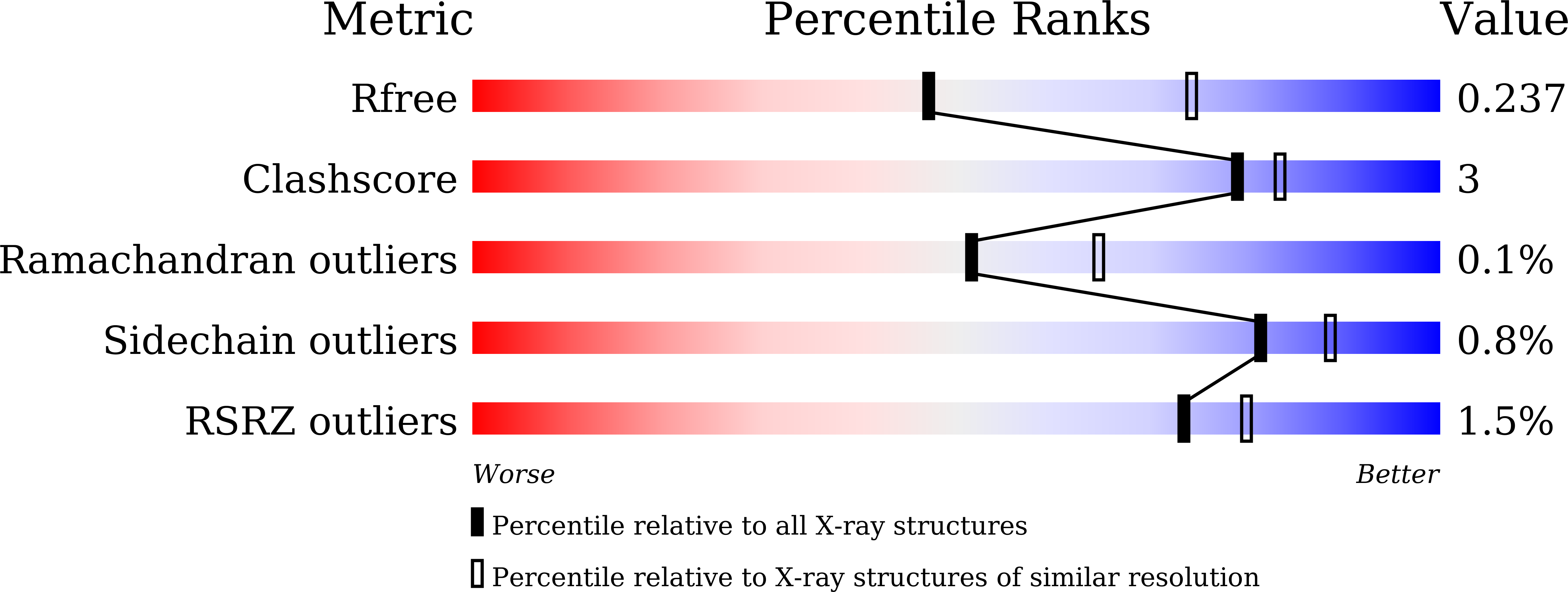Identification of FtfL as a novel target of berberine in intestinal bacteria.
Yan, J., Fang, C., Yang, G., Li, J., Liu, Y., Zhang, L., Yang, P., Fang, J., Gu, Y., Zhang, Y., Jiang, W.(2023) BMC Biol 21: 280-280
- PubMed: 38049785
- DOI: https://doi.org/10.1186/s12915-023-01778-w
- Primary Citation of Related Structures:
7XZN, 7XZO, 7XZP - PubMed Abstract:
Berberine (BBR) is a commonly used anti-intestinal inflammation drug, and its anti-cancer activity has been found recently. BBR can intervene and control malignant colorectal cancer (CRC) through intestinal microbes, but the direct molecular target and related mechanism are unclear. This study aimed to identify the target of BBR and dissect?related mechanisms against the occurrence and development of CRC from the perspective of intestinal microorganisms. Here, we found that BBR inhibits the growth of several CRC-driving bacteria, especially Peptostreptococcus anaerobius. By using a biotin-conjugated BBR derivative, we identified the protein FtfL (formate tetrahydrofolate ligase), a key enzyme in C1 metabolism, is the molecular target of BBR in P. anaerobius. BBR exhibits strong binding affinity and potent inhibition on FtfL. Based on this, we determined the crystal structure of PaFtfL?(P.?anaerobius FtfL)-BBR complex and found that BBR can not only interfere with the conformational flexibility of PaFtfL tetramer by wedging the tetramer interface but also compete with its substrate ATP for binding within the active center. In addition, the enzymatic activities of FtfL homologous proteins in human tumor cells can also be inhibited by BBR. In summary, our study has identified FtfL as a direct target of BBR and uncovered molecular mechanisms involved in the anti-CRC of BBR. BBR interferes with intestinal pathogenic bacteria by targeting FtfLs, suggesting a new means for controlling the occurrence and development of CRC.
Organizational Affiliation:
CAS-Key Laboratory of Synthetic Biology, CAS Center for Excellence in Molecular Plant Sciences, Shanghai Institute of Plant Physiology and Ecology, Chinese Academy of Sciences, Shanghai, 200032, China.



















